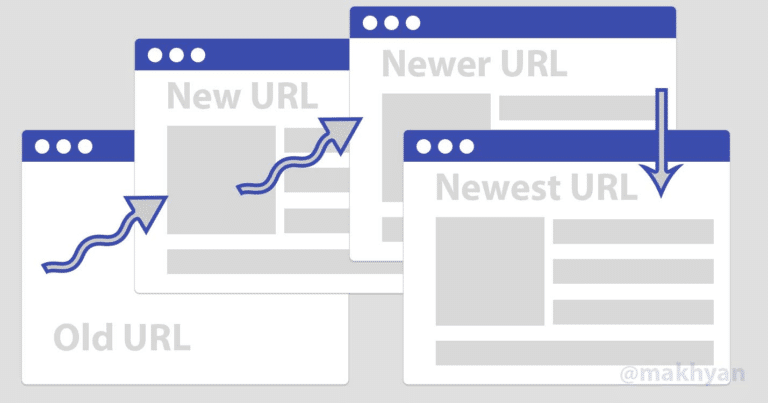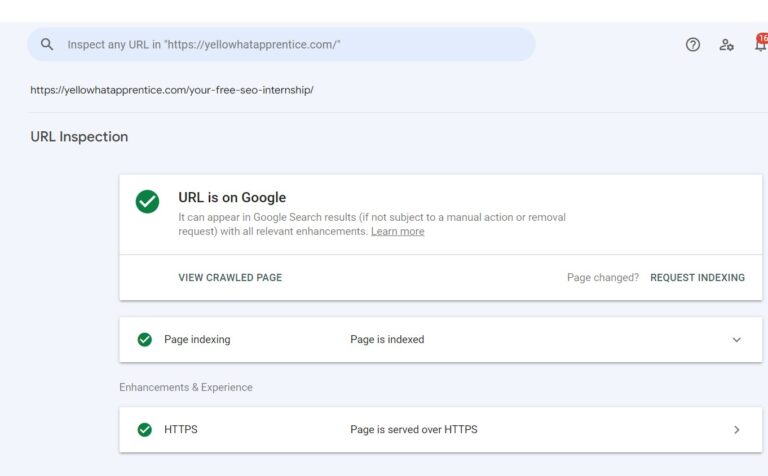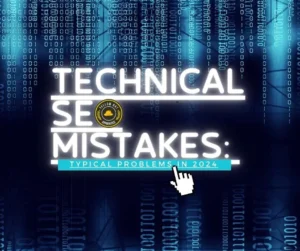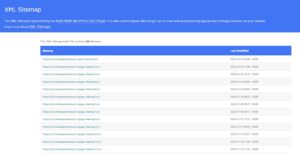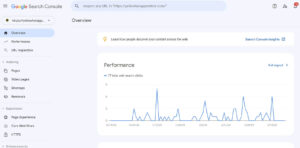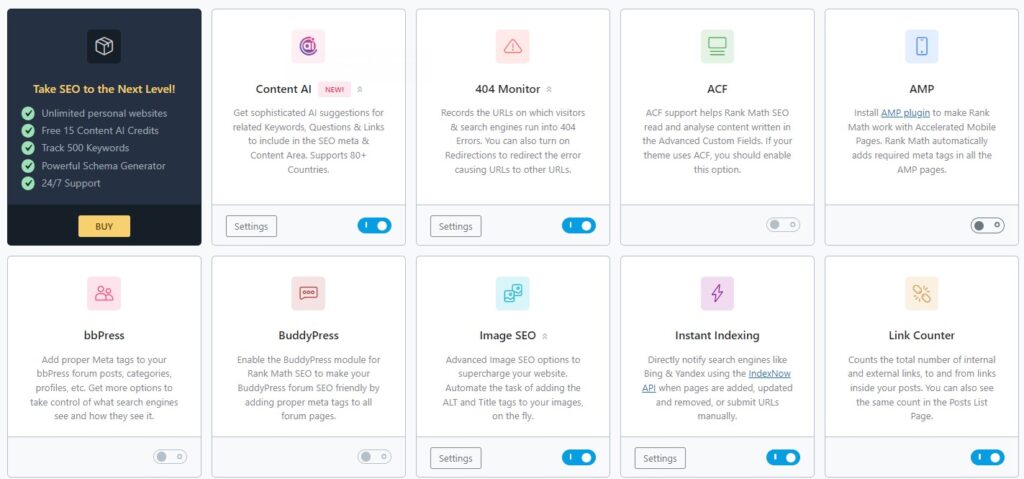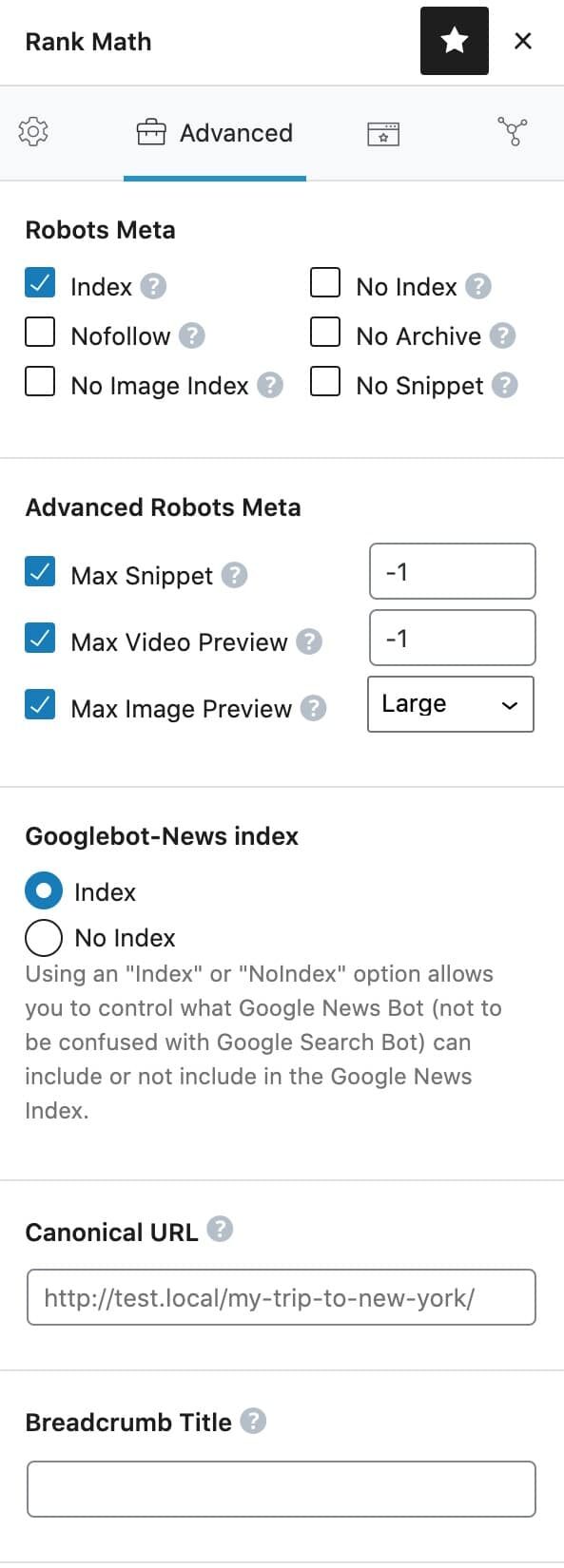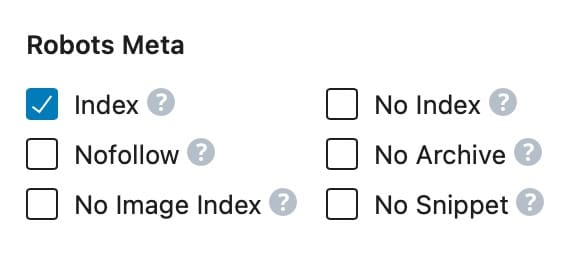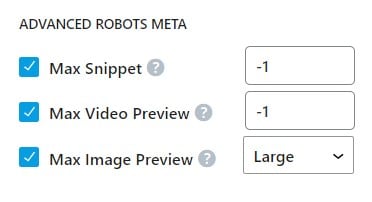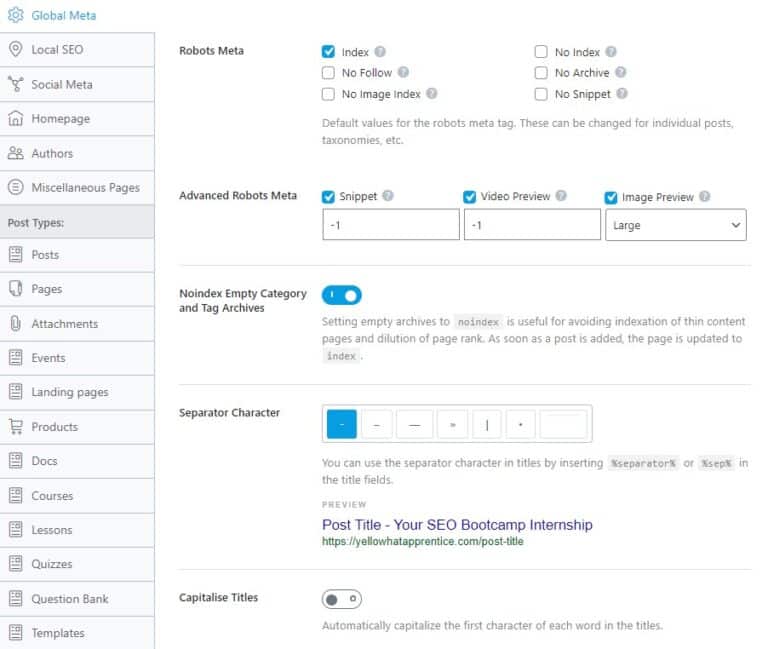SEO certification is no longer a luxury - it's a...
Read MoreLearn how to index your website and create sitemaps with our 2024 Google Search Console guide.
Google Search Console offers insightful information about how Google indexes, crawls, and displays the pages on your website in its search results. The main elements of indexing in Google Search Console are broken out as follows:
Googlebot’s, commonly referred to as Google’s crawlers, visit websites on a regular basis in order to find and index fresh content. The “Coverage” report in Google Search Console lets you see how well Google has indexed the pages on your website. In addition to any crawl faults or problems preventing specific pages from being indexed, you can see the total number of pages that are indexed. By keeping an eye on the crawl coverage, you can make sure that Google is efficiently indexing the information on your website and that no technological problems are impeding the indexation of any pages.
Site blueprints:
#1: Google Search Console Guide: Sitemaps
A sitemap is a file that assists search engines with comprehending the organization and content of your website by listing every page. You can get Google to crawl and index every page on your website by submitting the sitemap through Google Search Console. Information about the progress of your submitted sitemap, including the quantity of indexed pages and any mistakes found during the crawling process, can be found in Google Search Console’s “Sitemaps” report. Retrieve as Google:
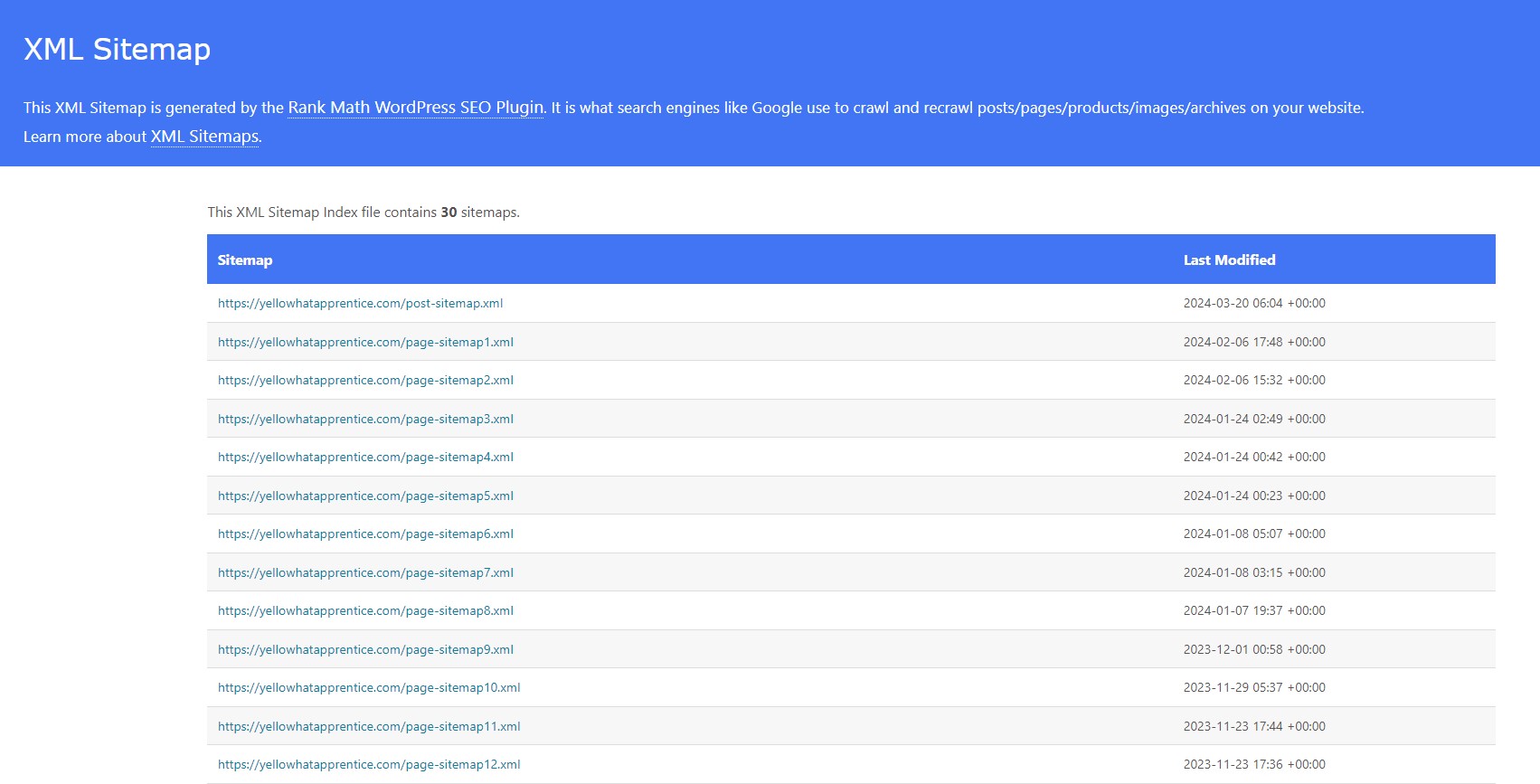

#2: Google Search Console Guide: Fetch as Google
With Google Search Console, you may mimic how Google views and crawls your webpages by using the “Fetch as Google” function. If you’ve made changes to your website and want to make sure Google’s index reflects them as soon as possible, you may use this tool to submit individual URLs for crawling.
You can also examine details about how Googlebot perceives your page, such as rendering or indexing problems, by using the “Fetch as Google” tool.
#3: Google Search Console Guide: URL Inspection
Google Search Console’s URL Inspection feature offers comprehensive details about a particular URL on your website. You can view the URL’s indexation status, the date and time of the latest crawl, and any problems with indexing or crawling that may have occurred. The URL Inspection tool also offers recommendations for enhancing the page’s visibility in search results, like adding structured data markup or resolving mobile usability problems.
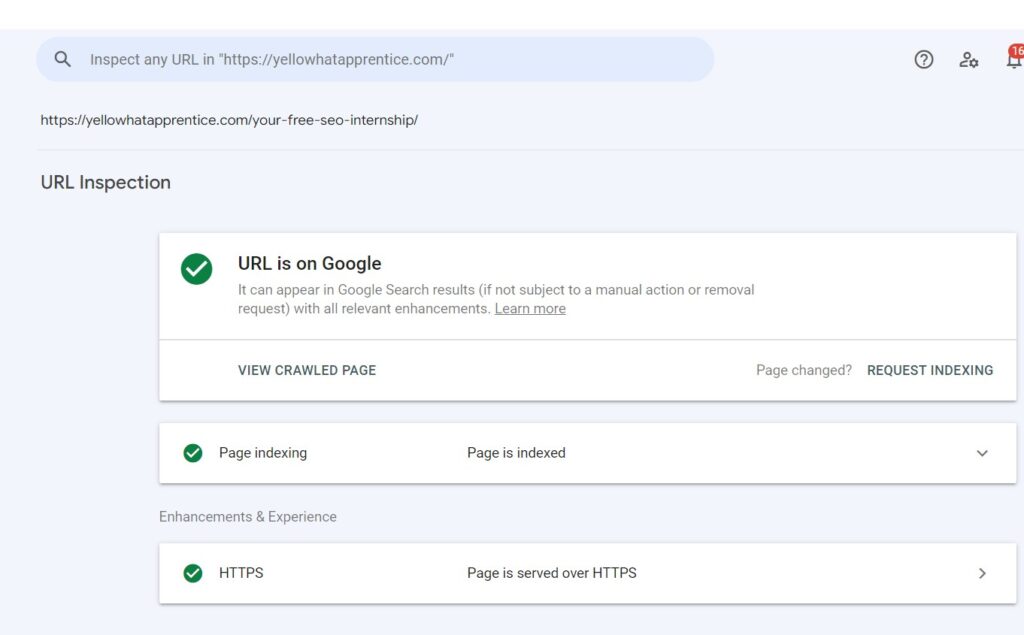
#4 Google Search Console Guide: Index Coverage
You can see an overview of the number of pages on your website that are indexed as well as whether there are any issues impeding indexing by utilising Google Search Console’s “Index Coverage” report.
In addition to particular reasons (such crawl failures or robots.txt blocking) why pages might not be indexed, you can view the quantity of legitimate, excluded, and error pages. Keeping an eye on the index coverage enables you to spot and fix any indexing problems that might be affecting how visible your website is in search results.
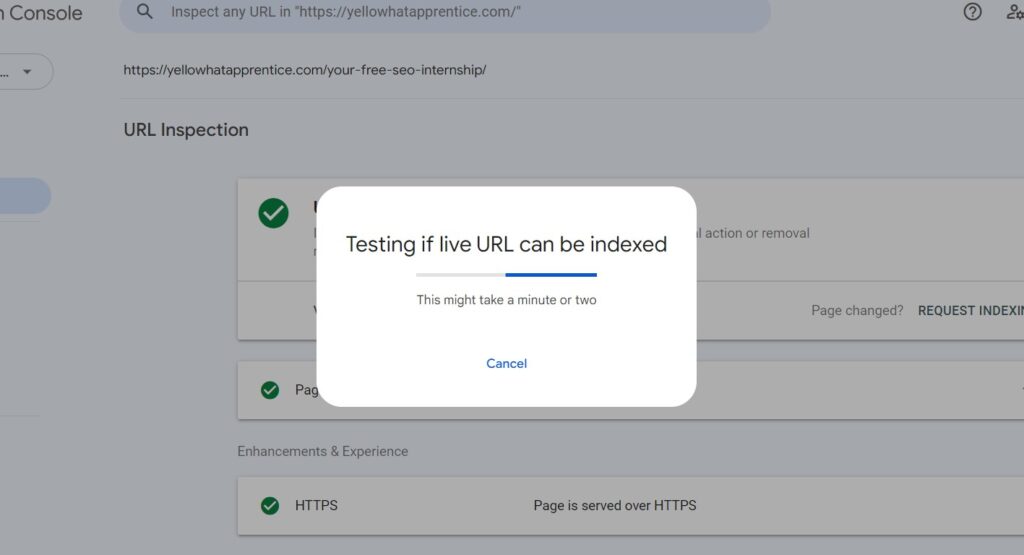
Step 5: Implementing SEO Best Practices: Google Search Console Guide
- Optimize your website’s metadata, including title tags, meta descriptions, and headings, to improve click-through rates and relevance.
- Create high-quality, relevant content that addresses user intent and provides value to your audience.
- Build high-quality backlinks from reputable websites to improve your website’s authority and credibility.
To know more just visit the link to get the entire video
GSC Indexing, Checking Links and Creating Your Sitemaps | Yellow Hat Apprentice
With our help, you can set up Google Search Console, troubleshoot display difficulties with data, and optimize your SEO by following these steps.
Frequently Asked Questions (FAQs) : Google Search Console 2024
1. What is Google Search Console (GSC) and why is it important?
- Google Search Console is a free tool provided by Google that helps website owners monitor and optimize their site’s performance in Google search results. It provides valuable insights into how Google crawls, indexes, and ranks your website, allowing you to identify issues and improve your site’s visibility.
2. How do I set up Google Search Console for my website?
- To set up Google Search Console for your website:
- Sign in to your Google account or create one if you don’t have one already.
- Go to the Google Search Console website and click on “Start Now.”
- Add your website URL and verify ownership using one of the verification methods provided (HTML file upload, HTML tag, domain name provider, Google Analytics, or Google Tag Manager).
- Once verified, you’ll have access to your website’s data in Google Search Console.
3. What are some key features of Google Search Console?
- Some key features of Google Search Console include:
- Performance reports: Insights into your website’s search performance, including clicks, impressions, click-through rates, and average position.
- Index coverage: Information about the indexing status of your website’s pages and any crawl errors or issues.
- URL inspection: Detailed information about a specific URL, including indexing status, crawling issues, and mobile usability.
- Sitemaps: Submitting XML sitemaps to help Google crawl and index your website more effectively.
- Mobile usability: Alerts and insights into mobile usability issues on your website.
4. How can I use Google Search Console to improve my website’s performance?
- You can use Google Search Console to improve your website’s performance by:
- Monitoring your website’s search performance and identifying opportunities for improvement.
- Checking for crawl errors and fixing any issues that may prevent Google from properly indexing your website.
- Submitting XML sitemaps to ensure that Google crawls and indexes all the pages on your website.
- Optimizing your website’s mobile usability to provide a better experience for mobile users.
- Using the URL inspection tool to troubleshoot specific URLs and address any indexing or crawling issues.
5. What should I do if I encounter errors or issues in Google Search Console?
- If you encounter errors or issues in Google Search Console, such as crawl errors or indexing issues, you should:
- Review the details of the error or issue to understand the cause.
- Take appropriate action to fix the error or issue, such as resolving crawl errors, fixing broken links, or updating robots.txt directives.
- Monitor the impact of your actions in Google Search Console to ensure that the issue is resolved and that your website’s performance improves.
6. How often should I check Google Search Console?
- It’s recommended to check Google Search Console regularly to monitor your website’s performance, identify any issues or errors, and track the impact of your optimizations. Depending on the size and complexity of your website, you may want to check Google Search Console weekly or monthly to stay informed about changes and trends.
7. Can I use Google Search Console for keyword research?
- While Google Search Console primarily focuses on providing insights into your website’s performance in Google search results, you can use the performance reports to identify relevant search queries and keywords that drive traffic to your website. By analyzing clicks, impressions, and click-through rates for specific queries, you can uncover keyword opportunities and optimize your content accordingly.
8. How can I stay updated on changes and new features in Google Search Console?
- You can stay updated on changes and new features in Google Search Console by:
- Following the Google Webmasters blog and official Google Webmasters accounts on social media.
- Checking the “What’s new” section in Google Search Console for announcements and updates.
- Participating in Google Webmaster Central Office Hours Hangouts and webinars for insights and guidance from Google experts.
- Engaging with the Google Search Central Help Community for support and advice from fellow webmasters and SEO professionals.
9. Is Google Search Console compatible with other tools and platforms?
- Yes, Google Search Console is compatible with other tools and platforms, such as Google Analytics, Google Tag Manager, and various SEO software and analytics tools. You can integrate Google Search Console with these tools to enhance your website monitoring and optimization efforts and gain deeper insights into your website’s performance and user behavior.
10. How can I leverage Google Search Console for SEO and website optimization in 2024?
- To leverage Google Search Console for SEO and website optimization in 2024, you should:
- Regularly monitor your website’s search performance and identify opportunities for improvement.
- Address any crawl errors or indexing issues promptly to ensure that your website is properly indexed and visible in Google search results.
- Optimize your website’s mobile usability to provide a seamless experience for mobile users.
- Submit XML sitemaps and use the URL inspection tool to ensure that Google crawls and indexes all the pages on your website.
- Stay informed about changes and updates in Google Search Console and adapt your optimization strategies accordingly to maintain and improve your website’s performance in search results.
Free SEO Tools for SEO Freelancers
The top free SEO tools on the market have been selected by me. These tools are quick, easy to use, free, and meet a variety of needs. This collection contains helpful tools that can assist you with keyword research, competitor analysis, and website optimisation. Select one or more of the best free SEO tools available to improve your SEO efforts right now. I’ve chosen the best options available. These resources are quick, simple to use, cost-free, and suitable for many purposes. You can use the useful tools in this collection to help with competitor analysis, keyword research, and website optimization. Select one or more tools to help you with your SEO efforts immediately.
Using Google Search Console, a free SEO tool, you may enhance your website’s visibility in search results. It gives you details on how Google sees and crawls your website, enabling you to spot and fix any potential problems. By monitoring indicators like average position, click-through rates, and search impressions with Google Search Console, you can optimise your website for better visibility and ranks. Furthermore, you can support your link-building efforts and boost search engine authority by analysing and monitoring your website’s backlink profile with simplicity thanks to tools like Ahrefs’ Backlink Checker and Moz’s Link Explorer.
Learn how to optimize your SEO with our guide on setting up Google Search Console and troubleshooting issues with data display.
Understanding the Essence of Google Search Console
For both website owners and advertisers, Google Search Console is an essential tool. It acts as a direct channel of communication between Google’s search engine and your website. Google Search Console gives users access to a multitude of data and insights that enable them to assess how well their website is performing in search results and pinpoint areas for development.
Google Search Console essentially provides a thorough overview of how Google visits, indexes, and ranks your page. It gives you useful data on impressions, clicks, search queries, and click-through rates, so you can assess how well your SEO is working. Furthermore, Google Search Console notifies you of any possible problems, such as crawling, indexing, or security issues, that can affect how visible your website is in search results.
Fundamentally, an SEO internship is a life-changing experience that connects theory and practice—it’s not just a temporary position. Under the guidance of seasoned professionals, interns learn the ins and outs of search engine optimisation through organised programmes and practical experience.
Step 1: Introduction to SEO Optimization
- Understand the importance of SEO for your website’s visibility and traffic.
- Learn how optimizing your SEO can lead to higher rankings on search engine results pages (SERPs).
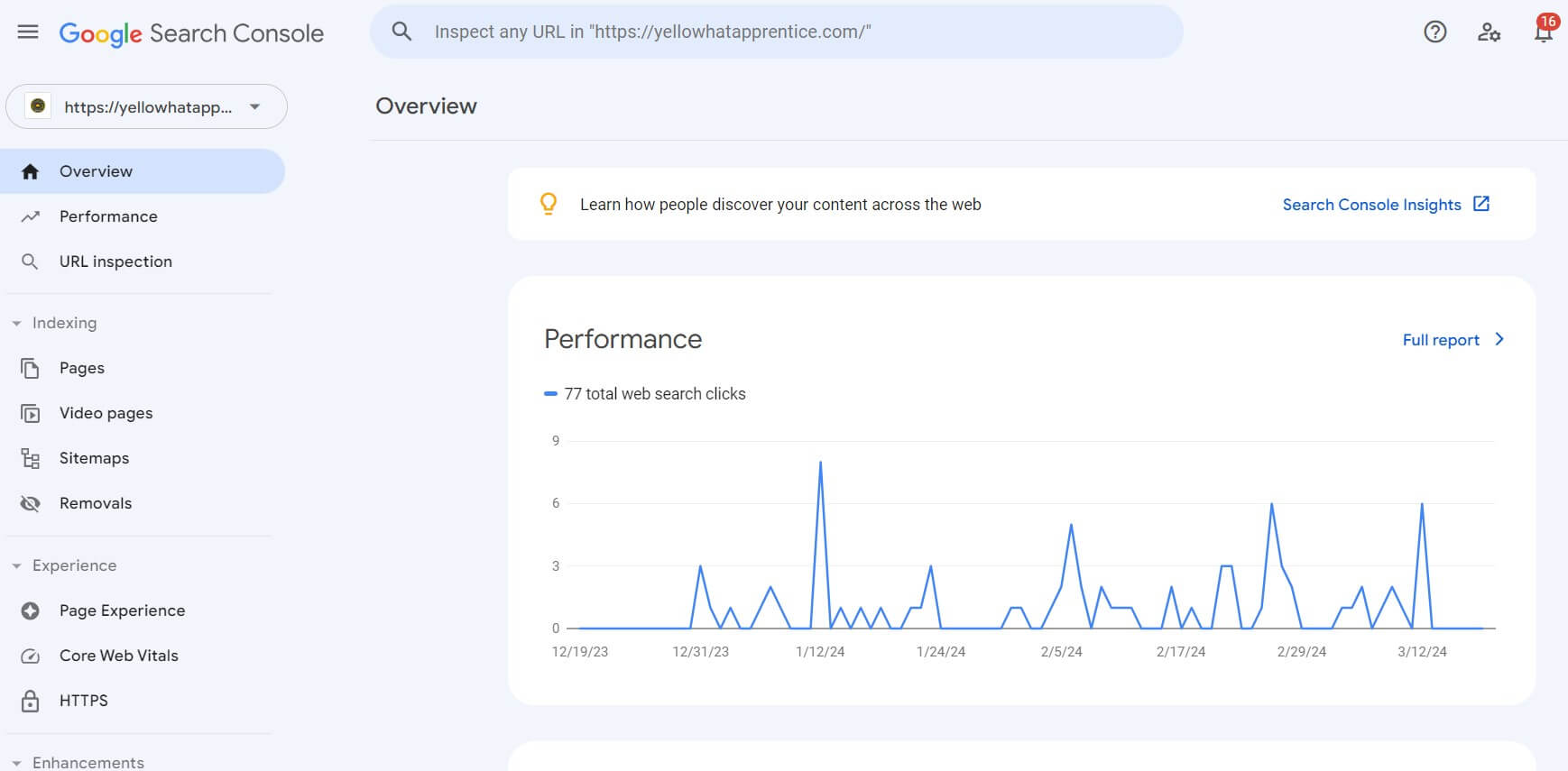

Step 2: Setting Up Google Search Console
- Create a Google account if you don’t already have one.
- Access Google Search Console and verify ownership of your website.
- Submit your website’s sitemap to Google for indexing.
- Explore the various features and reports available in Google Search Console.
Step 3: Understanding Search Console Data
- Familiarize yourself with the data provided in Google Search Console, including performance metrics, indexing status, and search appearance.
- Analyze search queries, impressions, clicks, and click-through rates to identify opportunities for improvement.
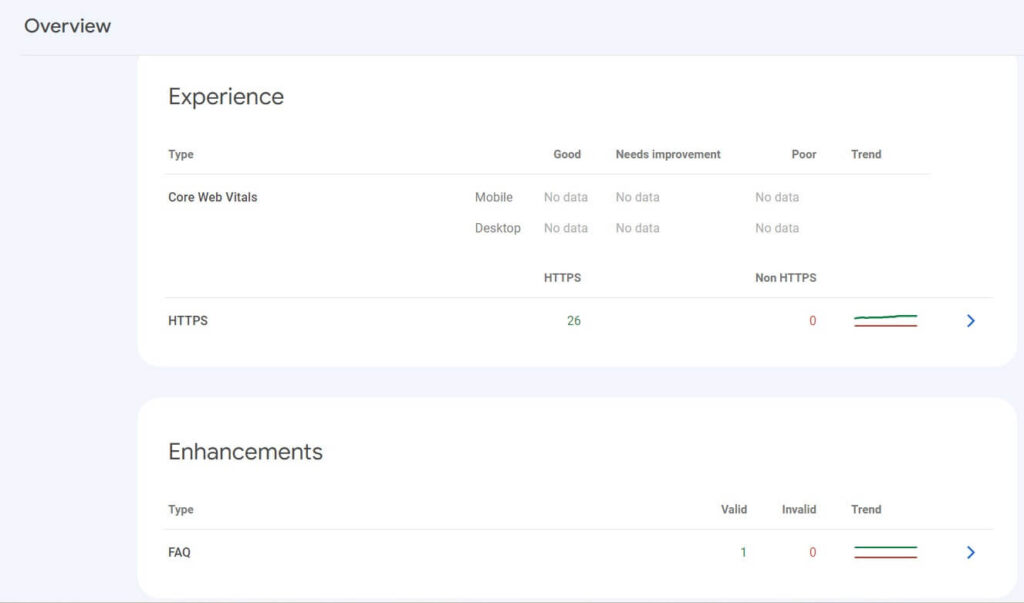
Step 4: Troubleshooting No Data Display
- Investigate common reasons for no data display in Google Search Console, such as incorrect website verification or indexing issues.
- Check for any manual actions or penalties affecting your website’s visibility in search results.
- Verify that your website is properly structured and optimized for search engines.
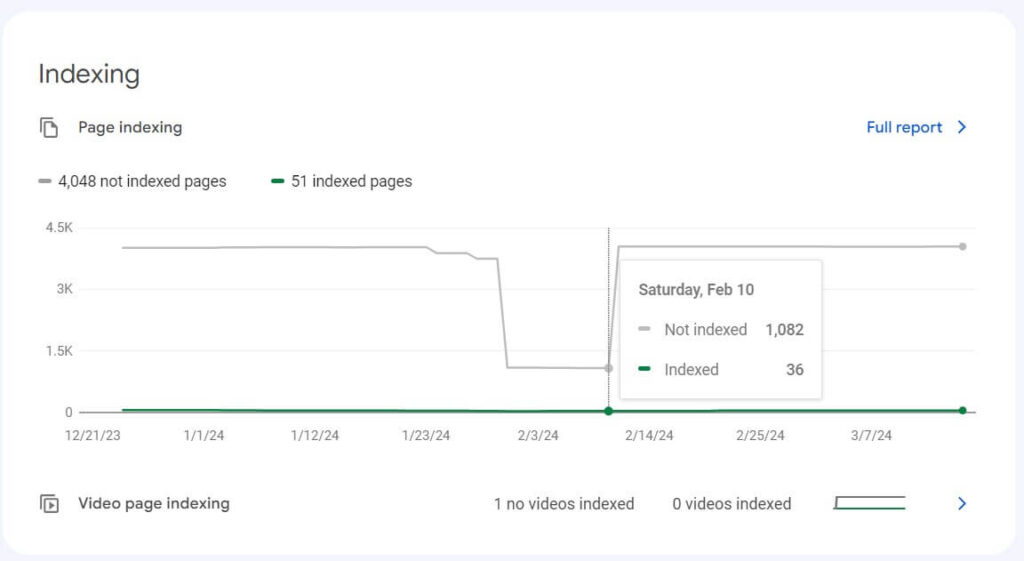
Step 5: Implementing SEO Best Practices
- Optimize your website’s metadata, including title tags, meta descriptions, and headings, to improve click-through rates and relevance.
- Create high-quality, relevant content that addresses user intent and provides value to your audience.
- Build high-quality backlinks from reputable websites to improve your website’s authority and credibility.
To know more just visit the link to get the entire video
With our help, you can set up Google Search Console, troubleshoot display difficulties with data, and optimize your SEO by following these steps.
Frequently Asked Questions (FAQs) : Technical SEO
- 1. What is Technical SEO?
- Technical SEO refers to the optimization of your website’s technical aspects to improve its search engine visibility and performance. It focuses on factors such as site speed, mobile-friendliness, website architecture, crawlability, indexing, and structured data markup.
- 2. Why is Technical SEO important?
- Technical SEO is crucial because it ensures that search engines can crawl, index, and understand your website effectively. By addressing technical issues and optimizing technical elements, you can improve your website’s rankings, visibility, and overall user experience.
- 3. What are some common technical SEO issues?
- Common technical SEO issues include:
- Slow page speed.
- Mobile usability issues.
- Broken links and redirects.
- Duplicate content.
- Thin or low-quality content.
- Incorrect use of canonical tags.
- Poor website structure and navigation.
- Indexing and crawlability issues.
- HTTPS implementation and security issues.
- 4. How can I improve page speed for better technical SEO?
- To improve page speed for better technical SEO:
- Optimize images by compressing them and using the appropriate file formats.
- Minimize HTTP requests by reducing the number of scripts, stylesheets, and resources.
- Enable browser caching to store website files locally on users’ devices.
- Use a content delivery network (CDN) to distribute content and reduce server response times.
- Minify CSS, JavaScript, and HTML code to reduce file sizes.
- Consider server optimization and upgrading hosting plans for better performance.
- 5. What is mobile-first indexing and why is it important for technical SEO?
- Mobile-first indexing means that Google primarily uses the mobile version of a website’s content for indexing and ranking in search results. It’s important for technical SEO because mobile-friendly websites are given preference in search rankings, and non-mobile-friendly sites may see a drop in rankings. To optimize for mobile-first indexing, ensure that your website is responsive, loads quickly on mobile devices, and provides a seamless user experience across all screen sizes.
- 6. How can I improve crawlability and indexing for my website?
- To improve crawlability and indexing for your website:
- Create a XML sitemap and submit it to search engines.
- Use robots.txt to control which pages search engines can crawl and index.
- Optimize internal linking to ensure that all important pages are accessible from the homepage and other high-authority pages.
- Fix crawl errors reported in Google Search Console.
- Monitor and address duplicate content issues using canonical tags or redirects.
- Implement structured data markup to help search engines understand your content better.
- 7. What are the benefits of HTTPS implementation for technical SEO?
- Implementing HTTPS (Hypertext Transfer Protocol Secure) provides several benefits for technical SEO, including:
- Enhanced security and privacy for website visitors.
- Increased trust and credibility with users and search engines.
- Potential ranking boost in search results, as Google considers HTTPS as a ranking factor.
- Improved referral data accuracy in Google Analytics.
- Prevention of “not secure” warnings in web browsers, which can deter users from accessing your site.
- 8. How can I identify and fix technical SEO issues on my website?
- To identify and fix technical SEO issues on your website:
- Conduct a comprehensive technical SEO audit using tools like Google Search Console, Google PageSpeed Insights, Screaming Frog, and SEMrush.
- Monitor crawl errors, index coverage, and other technical issues in Google Search Console.
- Analyze website performance metrics and user experience factors such as page speed and mobile-friendliness.
- Regularly review and update your website’s robots.txt file, XML sitemap, and internal linking structure.
- Address any technical issues promptly and prioritize fixes based on their impact on SEO performance.
- 9. How can I optimize website structure and navigation for technical SEO?
- To optimize website structure and navigation for technical SEO:
- Create a logical and hierarchical website structure with clear categories and subcategories.
- Use descriptive and keyword-rich URLs for pages and categories.
- Implement breadcrumbs navigation to help users and search engines understand the site structure.
- Ensure that all important pages are accessible within a few clicks from the homepage.
- Use HTML sitemaps to provide an overview of the site’s structure and improve crawlability.
- Monitor and fix broken links and redirects to prevent crawl errors and improve user experience.
- 10. What are some best practices for technical SEO optimization?
- Best practices for technical SEO optimization include:
- Regularly monitor website performance and technical issues using tools like Google Search Console and website auditing tools.
- Keep your website updated with the latest web technologies and security patches.
- Prioritize mobile optimization and ensure that your site is responsive and mobile-friendly.
- Optimize website speed and performance by optimizing images, reducing server response times, and minimizing code.
- Use structured data markup to provide context and additional information to search engines.
- Implement HTTPS to ensure secure connections and improve search engine rankings.
- Monitor and address crawl errors, index coverage issues, and other technical SEO issues promptly.
SEO Free Tools For SEO Jobs
I’ve gathered a selection of the best free SEO tools available on the market. These tools cover various needs and are quick, free, and user-friendly. Whether you need help with keyword research, competitor analysis, or website optimization, you’ll find valuable tools in this collection. Choose one or even multiple tools to enhance your SEO efforts today.The top free SEO tools on the market have been selected by me. These tools are quick, easy to use, free, and meet a variety of needs. This collection contains helpful tools that can assist you with keyword research, competitor analysis, and website optimization. To improve your SEO efforts right now, pick one or more tools.
Google Search Console is a free SEO tool that gives you the ability to improve the performance of your website in search results. It provides information about how Google views and indexes your website, allowing you to identify and address any issues that may arise. You may refine your website for increased visibility and ranks by tracking metrics like average position, click-through rates, and search impressions with Google Search Console. In addition, tools like Ahrefs’ Backlink Checker and Moz’s Link Explorer make it easier to analyze and keep an eye on the backlink profile of your website, which supports your link-building efforts and increases search engine authority.
Enter SEO internships – the gateway to a world of opportunity in the realm of digital marketing. In this guide, we’ll unravel the intricacies of SEO internships and shed light on the myriad career paths they can unlock.
Understanding the Essence of SEO Internship
At its core, an SEO internship is more than just a stint; it’s a transformative journey that bridges the gap between theory and practice. Through structured programs and hands-on experience, interns delve into the nuances of optimizing websites for search engines, under the mentorship of seasoned professionals.
Navigating the Diverse Landscape: Types of SEO Internship
Within the realm of SEO internships lie a plethora of opportunities, each catering to distinct skill sets and interests:


1. Content Optimization Internship:
Content reigns supreme in the realm of SEO. Interns in this specialization hone their skills in crafting, editing, and optimizing website content to align with SEO best practices. From conducting keyword research to fine-tuning on-page elements, they play a pivotal role in enhancing a website’s visibility.
2. Technical SEO Internship:
For those inclined towards the technical facets of SEO, this internship delves into the intricacies of website audits, technical issue identification, and resolution. Interns emerge equipped with the prowess to optimize websites for peak performance and search engine compatibility.
3. Link Building Internship:
Link building is the backbone of off-page SEO. Interns in this domain cultivate the art of building relationships, conducting outreach campaigns, and acquiring high-quality backlinks to bolster a website’s authority and search engine rankings.
4. Local SEO Internship:
Local businesses thrive on local searches. Interns specializing in local SEO focus on strategies to enhance a business’s visibility in local search results, managing online reviews, and optimizing local listings for maximum impact.
5. E-commerce SEO Internship:
E-commerce websites present unique SEO challenges. Interns in this niche learn to optimize product pages, craft compelling descriptions, and leverage structured data to elevate product visibility in crowded online marketplaces.
6. Analytics and Reporting Internship:
Data is the lifeblood of SEO success. Interns in this role dissect data from tools like Google Analytics, deriving actionable insights and crafting performance reports to drive informed decision-making.
Paving the Way: Opportunities Arising from SEO Internships
The journey doesn’t end with the internship; it’s merely the beginning of a myriad of career paths:
- Full-Time SEO Specialist: Transition into a full-fledged SEO specialist, spearheading strategies, monitoring performance, and staying abreast of industry trends.
- Content Marketer: Seamlessly segue into a content marketing role, crafting and disseminating content that resonates with audiences while adhering to SEO guidelines.
- Technical SEO Analyst: Dive deeper into technical intricacies as a technical SEO analyst, diagnosing and rectifying technical issues for enhanced search engine performance.
- Link Building Specialist: Become a master of link building, orchestrating campaigns to acquire quality backlinks and fortify a website’s online presence.
- Local SEO Manager: Specialize in local SEO management, optimizing businesses for maximum visibility in local search results and driving foot traffic.
- E-commerce SEO Manager: Oversee the optimization of e-commerce websites, fine-tuning product listings and categories to boost online sales.
- SEO Consultant: Embark on an independent journey as an SEO consultant, offering expertise to businesses seeking to elevate their online presence.
- Data Analyst or SEO Analyst: Leverage analytical prowess as a data or SEO analyst, deciphering insights to drive strategic decision-making.
- Digital Marketing Specialist: Broaden horizons into broader digital marketing roles, orchestrating multi-channel campaigns across advertising, social media, and email marketing.
In Conclusion
Is this conversation helpful so far?

